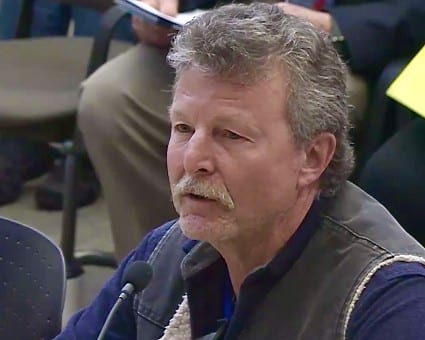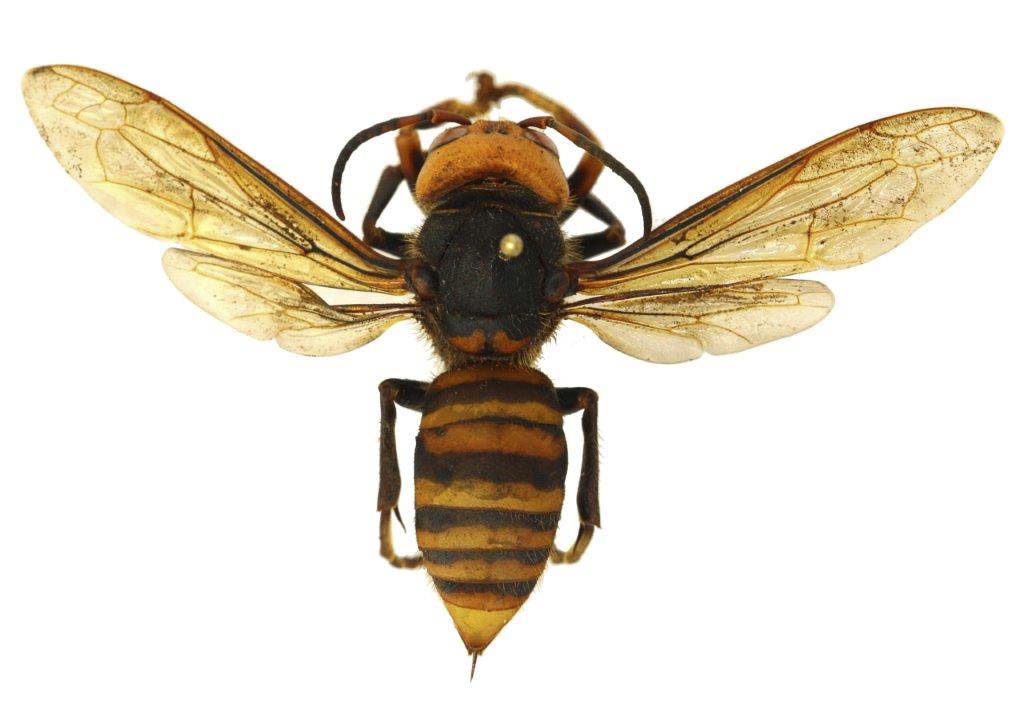Clark County beekeeper explains why you shouldn’t panic about the Asian Giant Hornet in the Pacific Northwest
CLARK COUNTY — By now, you’ve probably heard about them.
They can be up to two inches long. Massive mandibles shaped like claws allow them to decapitate their prey; often native honey bees. They are the largest species of wasp on planet earth. Now, they are popping up in the Pacific Northwest.

The arrival of the Asian Giant Hornet, dubbed by some the “Murder Hornet,’’ in the U.S. has created a massive frenzy of posts and articles on social media. The hornet is native to many parts of Asia, but is predominantly in China and Japan.
In 2019, there were four reported sightings in British Columbia and Washington state. Now, the Giant Hornet has fast become a hot topic as more sightings were confirmed near Blaine, Washington this year. The now infamous attack on thousands of honey bees belonging to beekeeper, Ted McFall, in Blaine is being attributed to the Giant Hornet.
On the local front, beekeeping is a vital piece of pollination in Clark County. One third of all of our food is made possible by honey bees. Many in the field are approaching the Giant Hornet situation with caution and research. The good part, in many respects, is it’s not their first rodeo.

“What people don’t realize is all wasps eat the heads off honey bees, not just this one,” said Dane Arnett, beekeeper and president of the Pacific Northwest Queen Rearing Club. “The other one that we have that we’re more concerned about is the Bald Faced Hornet. The Bald Faced Hornet will eat the heads off of the yellow jackets, and honey bees. There’s more out there that’s really more prevalent today that we have to be aware of.”
This message of calm in the face of many more dramatic claims about the Giant Hornet, is not only here in Clark County. The Washington Department of Agriculture is well aware of the insect’s arrival and is preparing a response plan.
“Hornets, like honey bees and bumblebees and paper wasps and yellow jackets, are eusocial, so that means they form these large colonies with cooperative group care and nesting, which makes them sort of a super organism compared to other insects,” said Chris Looney, an entomologist and taxonomist with the WSDA, during a webinar. “Please keep in mind that this is a new subject for all of us in the Pacific Northwest and really the United States. And we’re learning a lot about this animal as we go along.”
Looney gave the webinar back in February, and has since spoken with The New York Times and others on the implications of this invasive species and what the WSDA is doing to combat them in Washington.
On a national level, the hornet’s presence is causing some fears among the beekeeping community. The hornet, as it turns out, is very partial to feeding its young on honey bees.
Like what is suspected in the McFall incident, the Giant Hornets are known to voraciously attack honey bee hives; decapitating the bees and slaughtering an entire hive in one attack. One Giant Hornet can kill up to 300 honey bees in an hour.
“The hornets will begin to focus on a hive and they will mark it with pheromones,” Looney said. “They just literally slaughter all the workers, and during this phase while they’re killing the bees, they treat that hive very much like their own nest and will be extremely aggressive and will attack you if you’re a beekeeper trying to fend them off.
“Once they basically have decimated the hive to where they no longer have to worry about it, they enter what they call the occupation phase. The Hornets treat it kind of like a grocery store without any checkers, pull larvae and pupae and return them to their nest for food.”

When it comes to humans, the Giant Hornets have a much longer stinger and more potent sting than other wasps. In some rare cases, it can cause anaphylactic shock and death.
Arnett has been raising honey bees and working with, among other places the Clark County Heritage Farm in Hazel Dell, as a master gardener for over six years now. He said he feels that while the Giant Hornet is a threat that they are still developing specific protocols for, its presence is being over sensationalized.
“We’re using integrated pest management and that means we’re using whatever modalities we can that are out there and we’ll have to adapt once we understand if the Asian Hornet even makes it this far, we hope it doesn’t,” Arnett said. “The message I would hope that people would take away is, it’s information. Trust it. Fact check it. Use the authorities that are out there. Don’t worry too much about it until you start seeing facts about it. This has been around for two years now that we know of … We just hope the evolution of the honey bee continues.”
In Japan, honey bees have learned to better defend themselves and their hives from the Giant Hornet by surrounding it, beating their wings, raising the temperature, and essentially cooking the hornet. The European honey bee here in North America, has not learned this technique to that degree quite yet.
The good news, right now, is that the only Giant Hornet nests discovered have been destroyed, and the other specimens found by WSDA were dead. The areas those specimens were found in are being heavily monitored.
Arnett went on to explain what Looney and WSDA also are encouraging, which is the use of large plastic drink bottles as traps for the hornets. Arnett also stressed that managing a situation like this strongly relies on beekeepers and an informed public reporting sightings to WSDA.
Both Looney and Arnett echoed each other exactly when it came to the public’s role if they spotted an Asian Giant Hornet: run away, and report it. This allows WSDA to add it to their data, and it keeps you safe, Looney and Arnett said.
“Don’t try to do anything with it, if they see it, try to take a picture, try to watch where it’s going to go, if it flies away,” Arnett said. “It’s very distinguished in its characteristics. If you saw one, you’d be freaked out, quite frankly. But definitely run away from it. Don’t try to entice it, or kill it, or swat at it or anything else because that would be devastating for somebody.”
To report Asian Giant Hornet sightings, activity or for answers to frequently asked questions, members of the public, beekeepers and pest control specialists can visit the WSDA website here.




